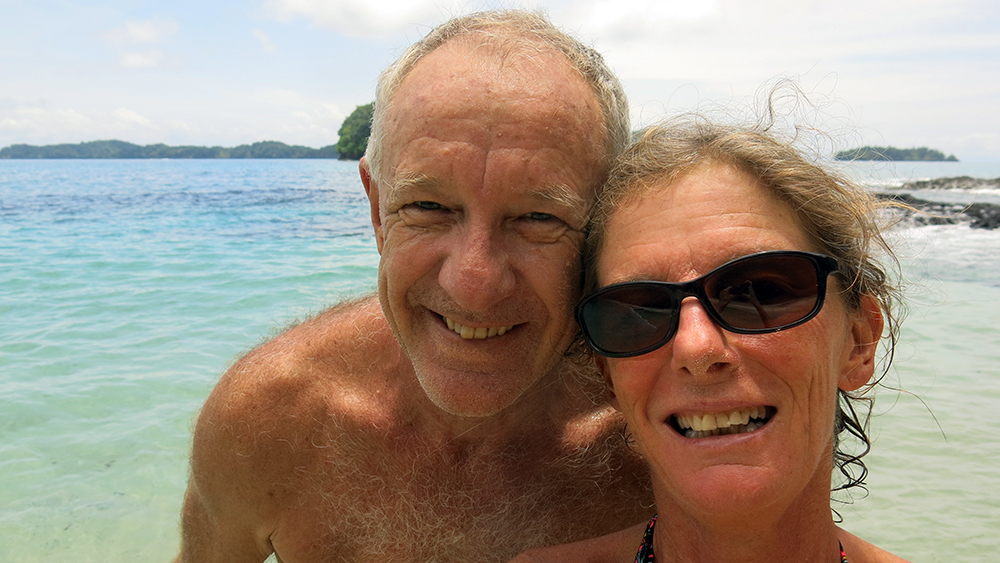
Enjoying exploring the pristine Islas Secas
Since leaving Costa Rica we have been sailing in the islands and waterways of western Panama and pretty much out of touch with the outside world. Unlike Costa Rica it seems that large swathes of Panama are not covered by any mobile networks so we have no phone or internet service. We get weather info and can send email via the SSB radio, otherwise we are off the grid. It feels great to be living in the moment; spending our days pottering around the boat, the beach or snorkelling on the reef and occasionally meeting local people and other cruisers. After a couple of weeks our need for fresh veggies and to connect with the world draws us back to the mainland.
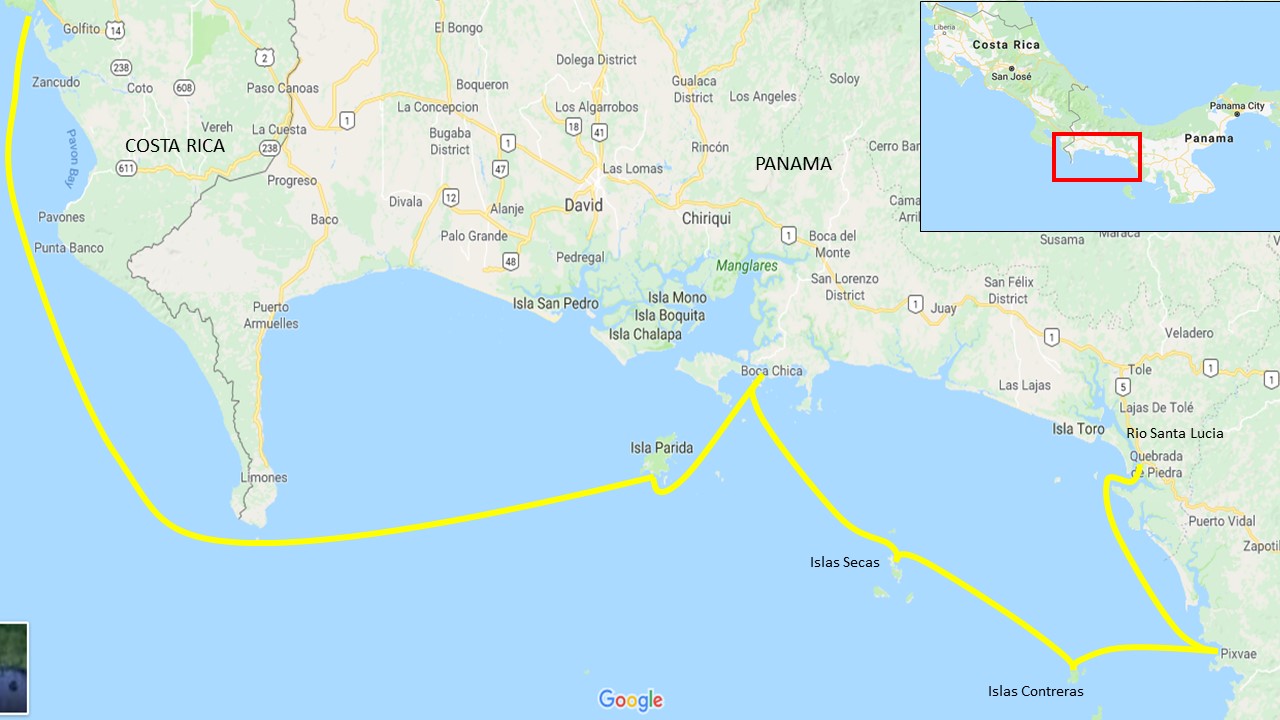
After rounding Punta Burica which hangs down like a big epiglotis marking the border between Costa Rica and Panama, we were heading for Boca Chica to complete our entry formalites but decided to stop for a few days at Isla Partida which is a convenient break in the passage. The island is surrounded by rocks and islets but the sheltered coves fringed with white sand and lush jungle lured us in. We dropped anchor in Ensenada del Varadero at the southern end of the island and caught up with our friend Kevin on S/V Colmena who we had run into several times in Costa Rica.
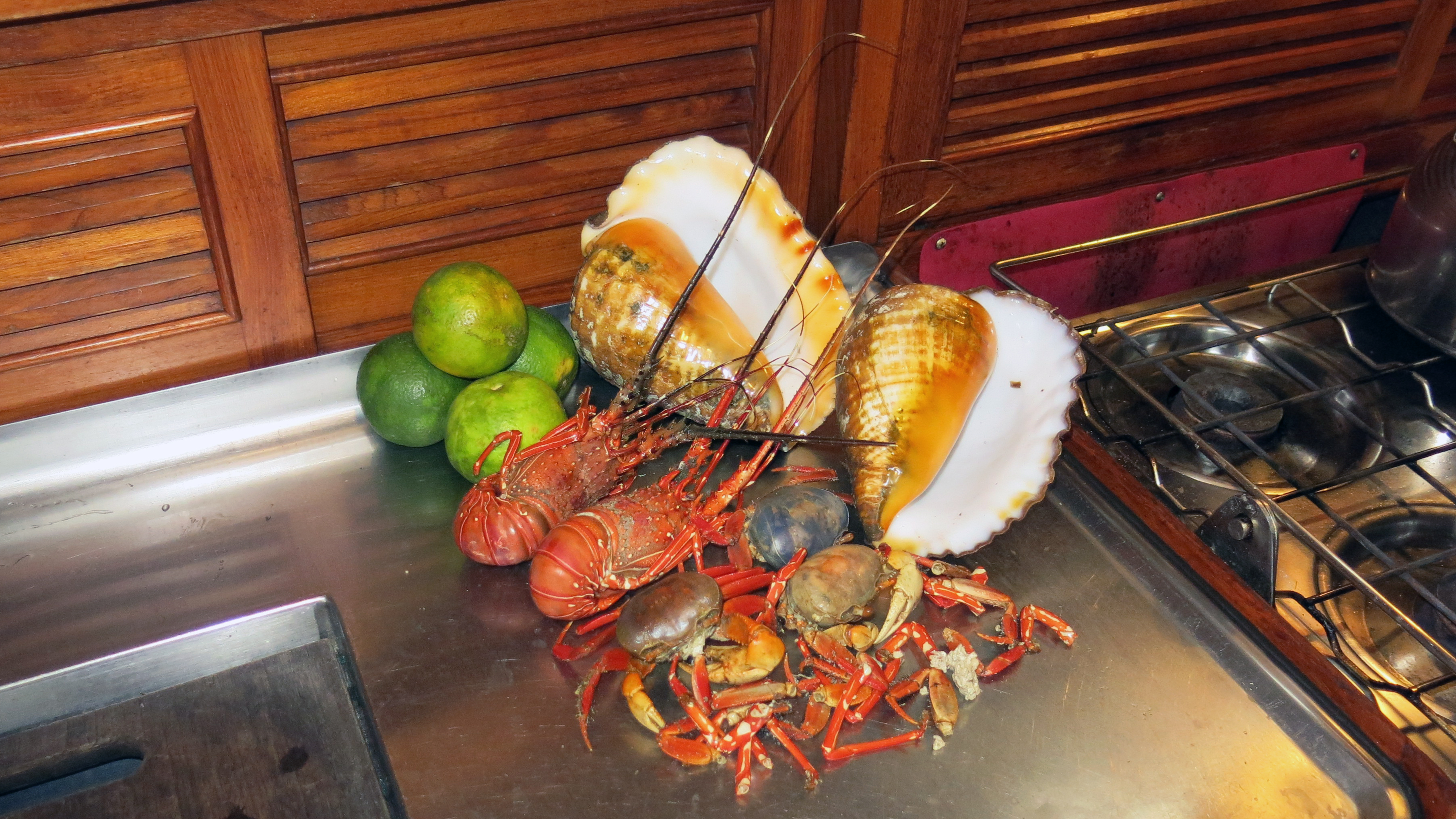
Traded for a couple of rusty shackles! The conchs were a bit of a mystery
Many of the islands here are privately owned and the land owners often install a caretaker to keep an eye on their property. Three of the four beaches at Ensenada del Varadero are private but the caretaker didn’t mind us exploring them and let us pick up a coconut or two to grate for milk or to munch on the flesh. One evening a fishing boat came alongside and we traded a couple of shackles for some oranges, a bucket load of crabs and lobsters, and two huge conchs. We enjoyed a seafood feast except for the conchs which we found inedible – when we tried to bite the flesh our teeth literally bounced back!
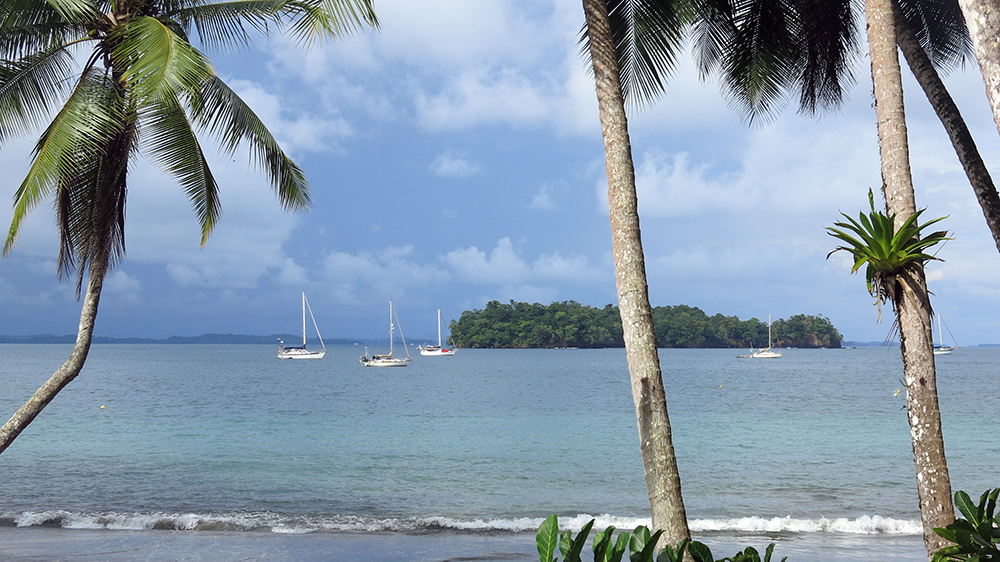
The cruising fleet! at anchor in Isla Partida
After a few days we moved up to Ensenada Sepulcro on the eastern side of the island where we found a couple of other cruising yachts already anchored. They had been there for several months so it was good to meet them and get the low down on preferred anchorages and places to avoid. A fun guy named Gerai runs the Isla Parida Lodge, a small tiki bar tucked away in the corner of the bay. He serves cold beer and simple, delicious seafood making this bay an obvious favorite for locals and cruisers alike.
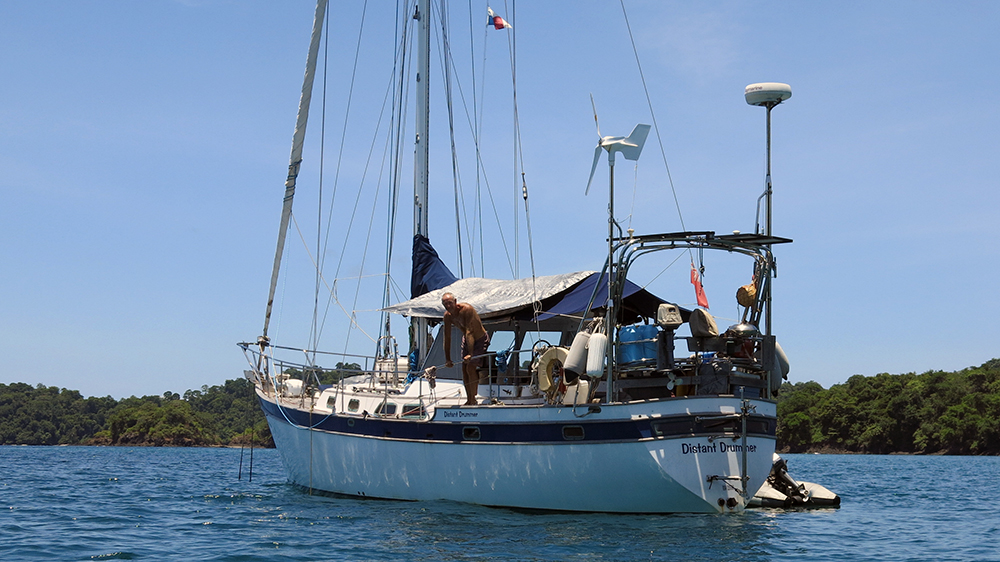
The skipper on board Distant Drummer
We still had to clear in to the country so after a week of fun in the sun at Isla Partida we headed up to Boca Chica to complete the formalities. The offices of the Port Captain, Customs and Immigration were actually in the port of Pedregal, about 27NM up the Rio Chiriqui but difficult for us to access by yacht due to shallow sand bars and low strung, high voltage cables. The two hour journey by road, two buses to the city of David and then a taxi, was easier!
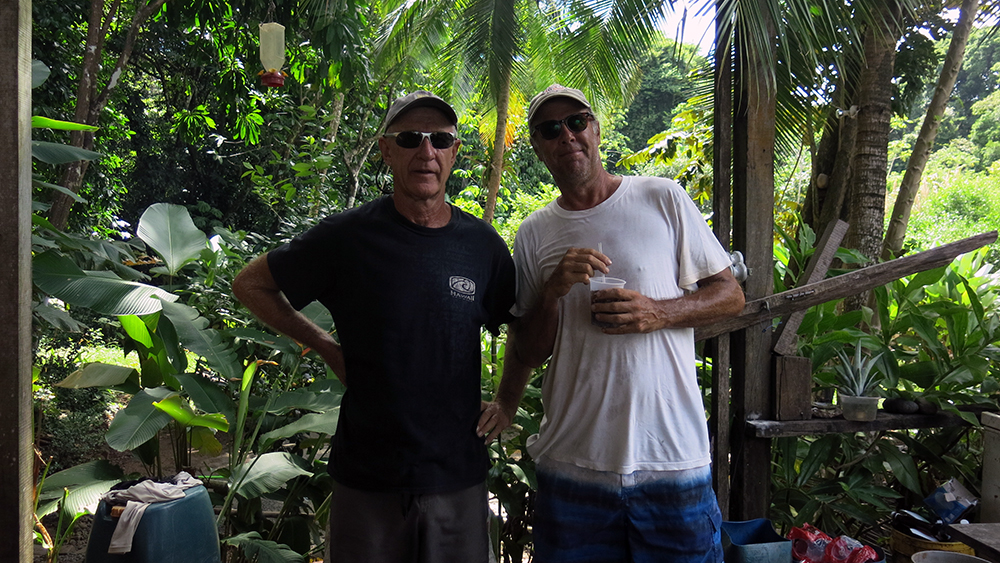
Kevin from S/V Colmena and Neil at the tikki bar on I. Partida
We made the trip to Pedregal with Kevin who also had to clear in. The officials then came to Boca to inspect the boats and we had to go back again the next day to complete the paperwork. As it turns out we needed to go to the market in David for provisioning anyway as the tienda in Boca had almost no fresh produce. David is the second biggest city in Panama but was there was nothing much of interest to see there. Nonetheless the town was thriving; the shops were full of goods and bustling with people, stalls in the streets were overflowing with fruit and vegetables and we filled our bags four a handful of dollars and struggled back to Boca on the crowded bus.
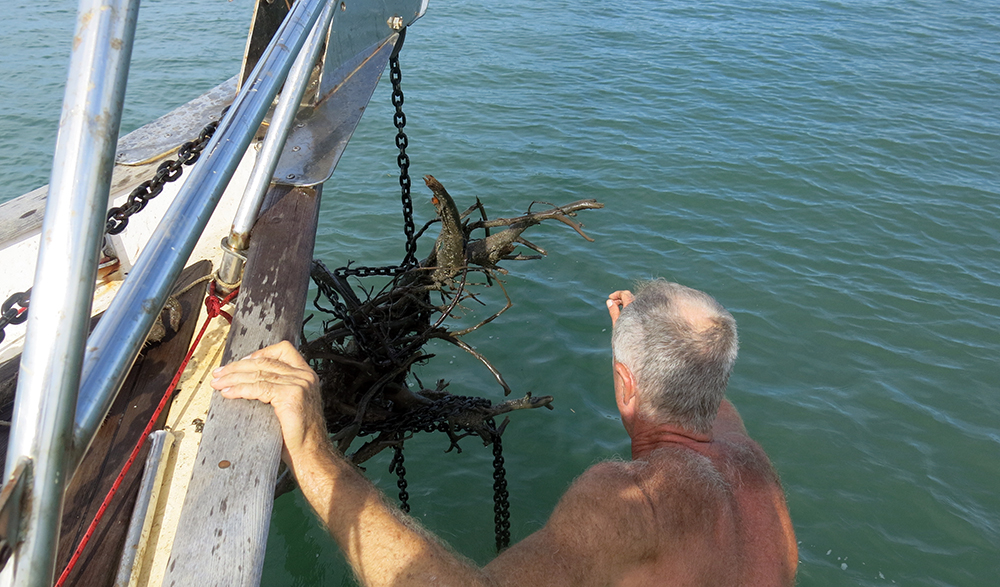
Boca Chica is not a great anchorage: it is in a channel with a strong tidal flow and is cluttered with shoals, rocky reefs and a wreck. One morning we woke up to find we had dragged anchor about 300m, it was a miracle that we hadn’t collided with one of the five other yachts or any of the underwater hazards. A tree trunk carried in the current had tangled in our chain causing the anchor to drag. I kept us off the reef while Neil hacked at the trunk with a machete from the dinghy, it was a perilous job and we were glad to finally see it sink below the surface and we could reset the anchor.
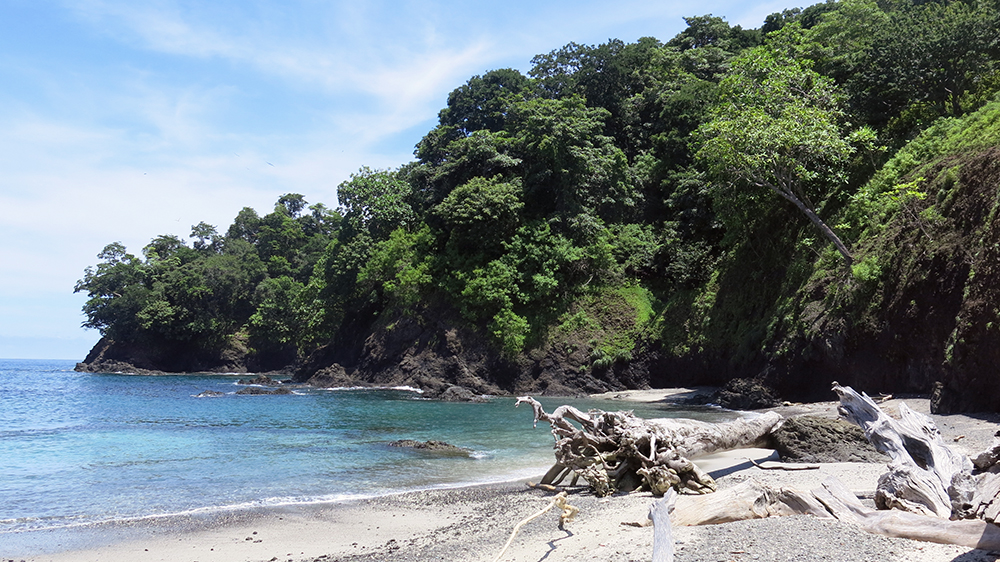
The beach at Islas Secas – scene of yoga, walks and beach bonfires
Isla Secas is a island group about 20NM southeast of Boca Chica and the main island had several bays on the east side which all looked like attractive anchorages. Unfortunately the charts here, as in most of Central America, are unreliable with inadequate soundings and the coastline can be mispositioned by hundreds of meters. Three of the bays turned out to be too shallow for us to enter but luckily the northern inlet was deeper and we dropped the pick just as the afternoon rain started.
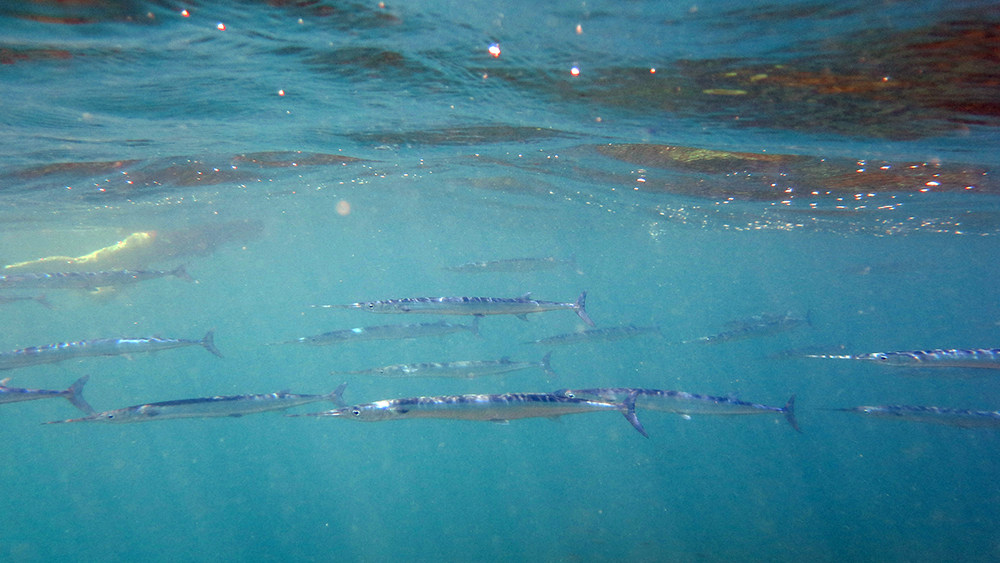
Me with a fleet of longtons, they look like mini Barracuda!
Islas Secas are known for their clear water and good coral reefs and we were really pleased to be able to hop into the water and enjoy some good snorkelling. The fish were plentiful and we were often surrounded by large schools of jacks, parrotfish and tangs. We saw several turtles and many free-swimming moray eels and we could hear the songs of whales while we snorkelled. Almost every day we see a humpbacks, often mother/calf pairs, and sometimes they come quite close to the boat. We watch them fin or tail slapping or just cruising through the anchorage – fantatstic!
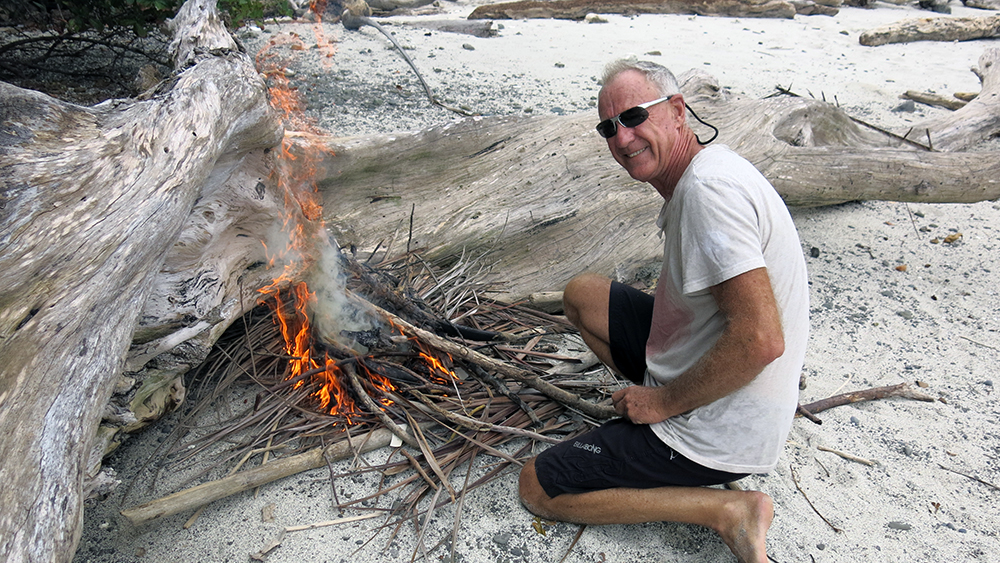
Neil getting a fire going with a glass of rum to hand
After a couple of days Kevin arrived in the bay and also a young French couple, Roxane and Manu, on S/V Bucanero came in and dropped anchor. We had a couple of beach bonfires and an evening on Distant Drummer playing music and enjoying a box or two of Clos – the cruisers choice of local wine. One morning a pair of squid boats pulled in and we traded five beers for a bucket of prawns which we shared with Roxy and Manu, there was way too many for us before they spoiled. What a catch!
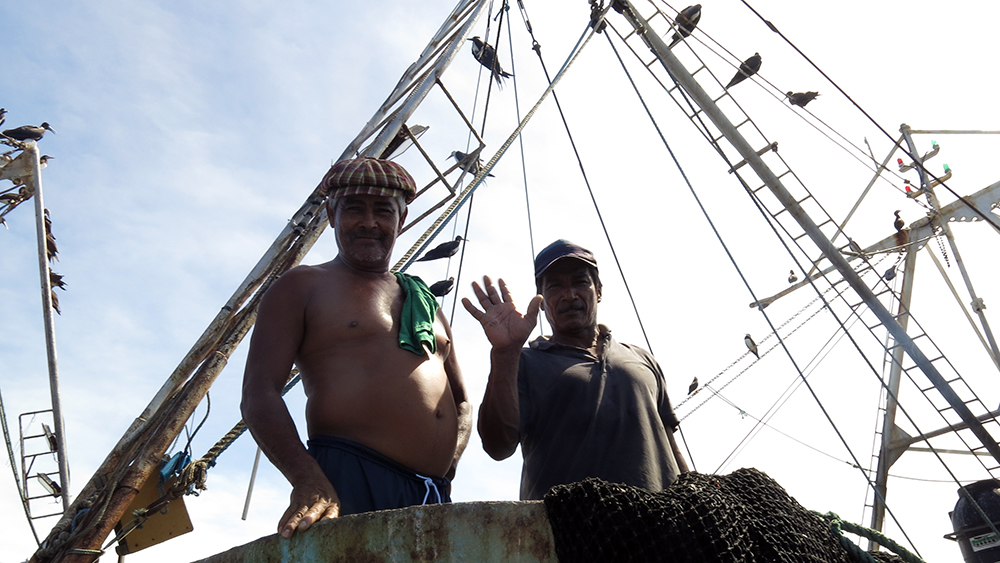
Five beers for a bucket of shrimps – these guys would have preferred whisky
We planned to spend a few days in the Islas Contreras which are part of the Isa Coiba National Park that encompasses many of the islands lying to the east of here. The fee to anchor in the park is about $100/day, even one night is outside of our budget! We knew that rangers patrolled the park but had heard that they rarely visited the outlying islands so we dropped the pick at Isla Brincanco, the Islas Contreras group. We were awoken early the next morning with a cheery “good morneeeng!” – the park rangers had arrived. We pleaded ignorance, had a quick breakfast and then moved on.
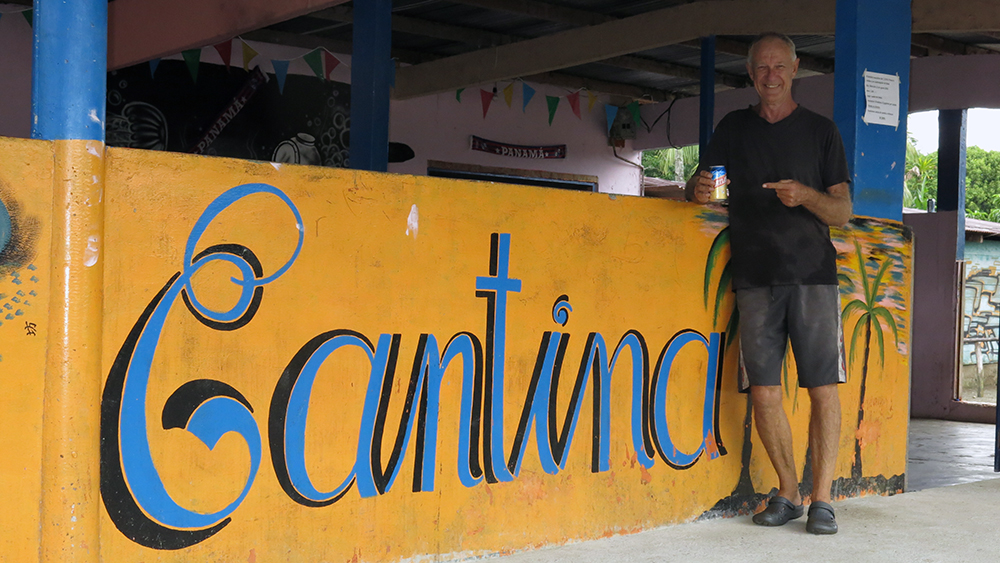
Hanging out at the cantina in Pixvae
We were in need of provisions and a quick internet fix so we headed to the village of Pixvae on the mainland. Once again the tienda (village shop) had no fresh produce and we finally figured out that they only sell what the villagers cannot produce themselves: rice, beans, flour and tinned food which we had plenty of. They had internet from 4-8pm in the park beside the police station. As in times gone by the people of the village came to the plaza at the end of the day to sit together, then they whipped out their mobile phones and started messaging people hundreds of miles away. Evenso there was still a good communal vibe; the Cantina pumped out jaunty music, young lads played football, teenagers flirted and small kids chased dogs and chickens around.
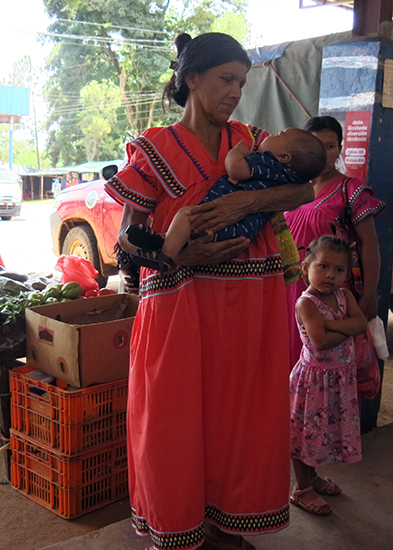
Mum and baby are from the indigenous group Ngöbe-Buglé. The ladies hand sew their colourful dresses
We decided to back track 20NM to Rio Santa Lucia where we navigated a few miles up the river and dropped anchor opposite a public jetty. There was no tienda here at all and no internet so we hitched a ride to the Pan-American highway then hopped on a bus to Tole, the nearest “big” town. We loaded up with veggies and other supplies, connected to the internet for a couple of hours while we drank coffee and ate lunch in a small café then took a taxi back to the boat – mission finally accomplished!
Now we’re heading off into the islands again. More soon!
Suzy x
